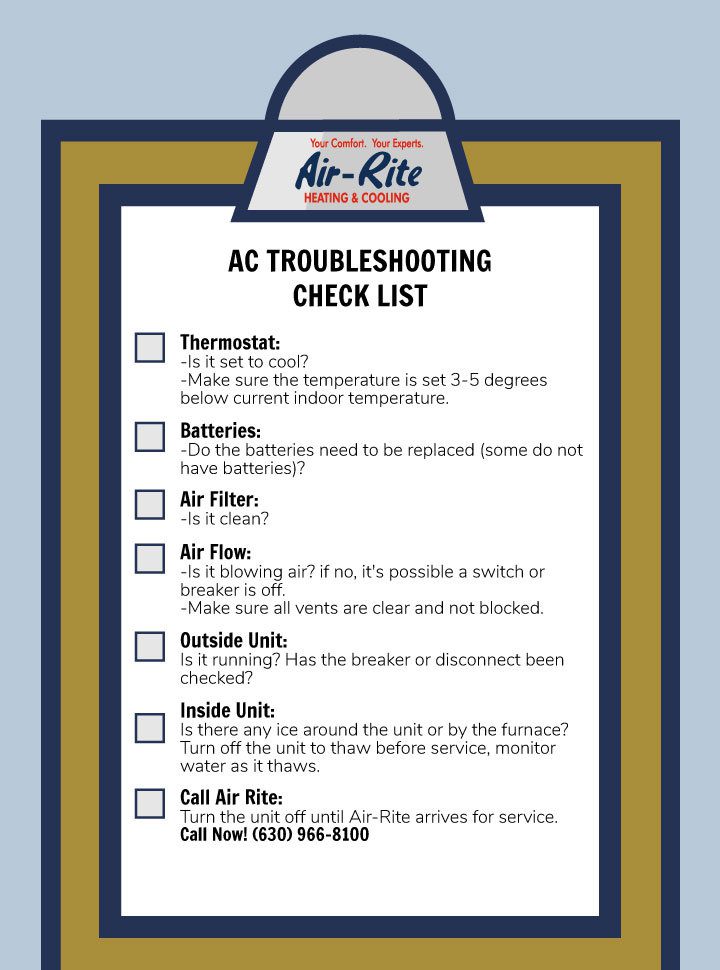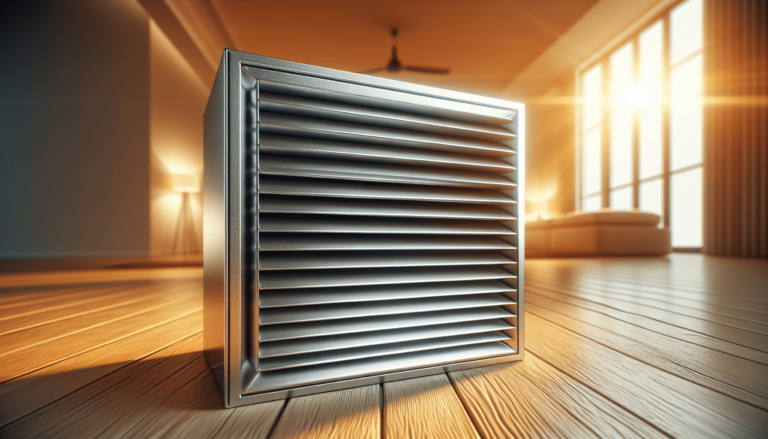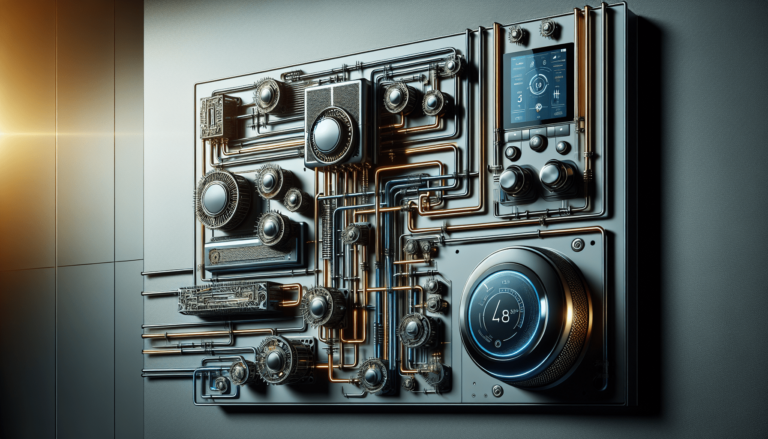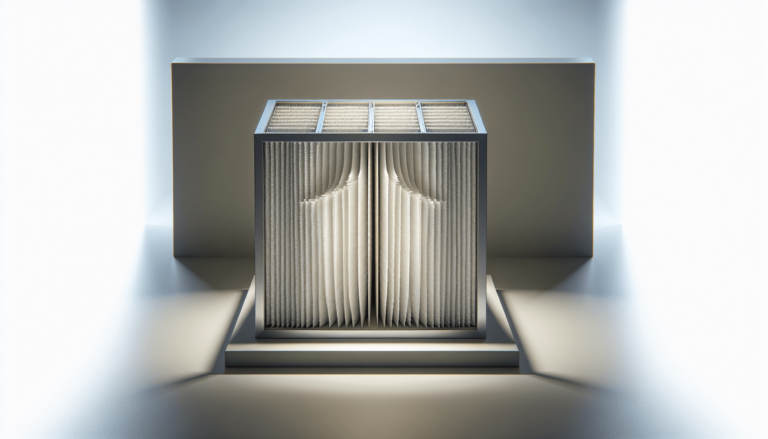

HVAC Services
Get Professional Repairs From The Area's Trusted HVAC Technicians. Ask About Our Services! We Offer Professional Heating & Cooling System Repairs And Guarantee Long-Lasting Results.
Got Question? Call us: (850) 678-2665Financing
Common HVAC Issues and Troubleshooting Guide
Meta Description: A comprehensive guide to common HVAC issues and troubleshooting tips. From airflow problems to thermostat malfunctions, we've got you covered. Keep your home comfortable with expert solutions!

In this handy guide, we’ll be tackling common HVAC issues and providing you with troubleshooting tips to help you stay comfortable in your home. Whether it’s a faulty thermostat, uneven heating or cooling, or strange noises emanating from your HVAC system, we’ve got you covered. And if you’re in the Niceville FL area, you’ll definitely want to reach out to Tempacure Heating and Air Conditioning for all your HVAC service, repair, and maintenance needs. With their expertise and top-notch customer service, they’re the leaders in the HVAC industry. So, let’s get ready to tackle those pesky HVAC issues and restore your home’s comfort!
Common HVAC Issues and Troubleshooting Guide
Having problems with your HVAC system? Don’t fret, we’ve got you covered! In this comprehensive guide, we’ll walk you through the most common HVAC issues and provide handy troubleshooting tips to help you get your system back up and running smoothly. Whether you’re experiencing airflow problems, heating issues, cooling problems, strange noises, electrical problems, Poor indoor air quality, thermostat problems, blower fan issues, condensate drainage problems, or outdoor unit troubles, we’ve got solutions for you. So let’s dive in and solve those HVAC problems together!
1. Airflow Problems
1.1 Blocked Air Vents
Is the airflow in your home feeling weak or uneven? One possible cause could be blocked air vents. Over time, dust, dirt, and other debris can accumulate in your vents, obstructing the airflow. To resolve this issue, start by checking all the vents in your home and ensure they are not blocked or covered by furniture, drapes, or other objects. If you find any blockages, simply remove them and allow the air to flow freely.
1.2 Dirty Air Filters
Another common culprit for poor airflow is dirty air filters. Air filters are designed to trap dust, pollen, and other particles, but when they get clogged, they can restrict the airflow. To fix this issue, locate your air filter and check its condition. If it appears dirty or clogged, replace it with a new one. It’s recommended to check and change your air filter every one to three months, depending on the manufacturer’s guidelines and the level of air pollutants in your area.
1.3 Leaking Ducts
Leaking ducts can also contribute to airflow problems in your HVAC system. If your ductwork is damaged or poorly sealed, the conditioned air may leak out before it reaches its intended destination. To identify and fix duct leaks, start by inspecting the visible sections of your ductwork for any visible signs of damage or gaps. If you notice any leaks, you can seal them using specialized duct sealing tape or mastic sealant. If the leaks are extensive or hard to reach, it’s best to call a professional HVAC technician for assistance.
2. Heating Issues
2.1 Thermostat Malfunctions
If your HVAC system is not heating your home properly, a thermostat malfunction may be to blame. Start by checking the batteries in your thermostat and replace them if necessary. Next, ensure that your thermostat is set to the correct mode (heating) and the desired temperature is higher than the current room temperature. If these steps don’t solve the issue, try resetting your thermostat by turning it off, removing the batteries (if applicable), waiting a few minutes, and then turning it back on. If the problem persists, you may need to replace your thermostat.
2.2 Pilot Light Problems
For gas-powered heating systems, a common issue is a malfunctioning pilot light. If your heating system is not producing heat, check the pilot light. If it is out, follow the manufacturer’s instructions to relight it. If the pilot light won’t stay lit or keeps going out, there may be an underlying problem with the gas supply or the thermocouple. In such cases, it’s best to contact a licensed HVAC professional to diagnose and repair the issue.
2.3 Insufficient Heating
If your HVAC system is running, but your home is still not getting warm enough, it could be due to insufficient heating. This problem can have various causes, such as a malfunctioning furnace, dirty or clogged burners, or an undersized HVAC system for your space. One simple troubleshooting step you can take is to check your thermostat settings and make sure the temperature is set higher than the current room temperature. If the problem persists, it’s advisable to contact an HVAC technician to inspect your system and identify the underlying cause.

This image is property of www.air-rite.com.
3. Cooling Problems
3.1 Inadequate Cooling
Is your air conditioning system failing to cool your home effectively? Inadequate cooling can be frustrating, especially during hot summer months. Several factors can contribute to this issue, including dirty air filters, refrigerant leaks, or an undersized air conditioning unit. Start by checking and replacing your air filters if necessary. If that doesn’t improve cooling, it’s best to consult an HVAC professional to diagnose and address the underlying cause.
3.2 Refrigerant Leaks
Refrigerant is crucial for the cooling process in your air conditioning system. If there is a refrigerant leak, your AC may struggle to cool your home properly. Signs of a refrigerant leak include ice buildup on the evaporator coil or a noticeable decrease in cooling performance. If you suspect a refrigerant leak, it’s essential to contact an HVAC technician to repair the leak and recharge the refrigerant to the manufacturer’s specifications.
3.3 Faulty Compressor
The compressor is the heart of your air conditioning system, responsible for pumping refrigerant and facilitating the cooling process. If your AC is not cooling or not turning on, a faulty compressor could be the culprit. Unfortunately, compressor issues are complex and usually require professional attention. It’s best to contact an HVAC technician to evaluate and repair or replace the compressor if necessary.
4. Strange Noises
4.1 Squealing or Screeching Sounds
Unusual noises coming from your HVAC system can be an indicator of underlying problems. If you hear high-pitched squealing or screeching sounds, it could be due to a worn-out belt or motor bearings. These components can wear out over time and may need to be replaced. To address this issue, it’s advisable to schedule a service call with an HVAC technician who can identify the source of the noise and perform the necessary repairs.
4.2 Banging or Clanking Noises
Loud banging or clanking noises coming from your HVAC system can be alarming. These noises can be caused by loose or broken components, such as a blower fan or a compressor. If you hear banging or clanking sounds, it’s crucial to turn off your HVAC system and contact a professional immediately. Continuing to run your system in this state can cause further damage and potentially lead to costly repairs.
4.3 Rattling or Humming Sounds
Rattling or humming sounds are common HVAC issues that can have several causes. Loose screws, debris in the system, or unbalanced components can all contribute to these noises. Check your HVAC system for loose panels or screws and tighten them if necessary. If the rattling or humming persists, it’s best to have an HVAC technician inspect your system to identify and resolve the issue.

This image is property of idealtempheatingandcooling.com.
5. Electrical Issues
5.1 Tripped Breakers
If your HVAC system suddenly stops working, it could be due to a tripped circuit breaker. Check your electrical panel and see if any HVAC-related breakers have tripped. If you find a tripped breaker, turn it off and then back on to reset it. However, if the breaker continues to trip or if you notice burn marks or a burning smell, it’s crucial to contact an electrician or HVAC professional to evaluate and repair the electrical issue.
5.2 Faulty Capacitors
Capacitors are electrical components in your HVAC system that help start the motors and keep them running smoothly. If a capacitor fails, it can cause your HVAC system to stop working or experience performance issues. Signs of a faulty capacitor include difficulty starting your system, intermittent operation, or unusual noises. If you suspect a faulty capacitor, it’s best to have an HVAC technician test and replace it if necessary.
5.3 Wiring Problems
Faulty or damaged wiring can cause a range of electrical issues in your HVAC system. If certain components stop working, experience intermittent operation, or if you notice burning smells or sparks, wiring problems may be to blame. Due to the complexity and potential danger associated with electrical work, it’s crucial to hire a licensed HVAC technician or electrician to inspect and repair any wiring issues in your system.
6. Poor Indoor Air Quality
6.1 Mold or Mildew Buildup
Poor indoor air quality can have a significant impact on your health and comfort. Mold or mildew buildup in your HVAC system can contribute to respiratory problems and unpleasant odors. If you notice a musty smell or see mold or mildew around your vents, it’s crucial to address this issue promptly. Start by cleaning the visible mold or mildew with a solution of water and detergent. However, it’s essential to understand that mold growth within your HVAC system may require professional cleaning and treatment to fully eliminate the problem.
6.2 Allergens or Pollutants
If you or your family members suffer from allergies or respiratory issues, poor indoor air quality can exacerbate their symptoms. Allergens, such as dust mites, pollen, or pet dander, can accumulate in your HVAC system and circulate throughout your home. Regular cleaning and maintenance of your HVAC system, along with the use of high-quality air filters, can help reduce allergens in your home. Additionally, consider using an air purifier or installing an HVAC UV light system to further improve indoor air quality.
6.3 Improper Ventilation
Proper ventilation is crucial for maintaining good indoor air quality. Inadequate ventilation can lead to stuffy air, excess humidity, and an accumulation of airborne contaminants. Make sure your vents and dampers are open and unobstructed to allow for proper airflow. If you’re concerned about ventilation in your home, consult an HVAC professional who can assess your system and provide recommendations for improving ventilation.

This image is property of www.achrnews.com.
7. Thermostat Problems
7.1 Inaccurate Temperature Reading
If your thermostat is displaying inaccurate temperature readings, it can cause your HVAC system to cycle on and off at the wrong times, leading to discomfort and energy inefficiency. To troubleshoot this issue, start by cleaning your thermostat’s sensor using a soft brush or compressed air. Additionally, ensure that your thermostat is not exposed to direct sunlight, drafts, or any other factors that may affect its accuracy. If these steps don’t resolve the problem, you may need to replace your thermostat.
7.2 Unresponsive Controls
Unresponsive controls can be frustrating when trying to adjust the temperature in your home. If your thermostat does not respond to your inputs, check the batteries and replace them if needed. Next, ensure that the thermostat is properly connected to the HVAC system and that all wires are securely attached. If the issue persists, it’s advisable to consult an HVAC technician who can diagnose and repair any underlying wiring or system-related problems.
7.3 Incorrect Settings
Sometimes, thermostat problems can be as simple as incorrect settings. Double-check your thermostat’s settings to ensure that it is set to the right mode (cooling or heating) and that the desired temperature is correctly inputted. If you have a programmable thermostat, ensure that the schedules and temperature settings are programmed correctly. By verifying and adjusting these settings, you can potentially resolve any issues with your thermostat.
8. Blower Fan Issues
8.1 Noisy or Vibrating Fan
If you notice unusually loud noises or excessive vibrations coming from your blower fan, it could be a sign of an issue. Loose or damaged fan blades, worn-out motor bearings, or imbalanced components can all contribute to these problems. Start by inspecting the blades and motor mount for any visible damage or signs of wear. If you find any issues, it’s best to have an HVAC technician inspect and repair your blower fan to prevent further damage and ensure optimal performance.
8.2 Weak Airflow
Weak airflow from your HVAC system can reduce comfort and efficiency. Several factors can contribute to weak airflow, including dirty air filters, blocked air vents, or malfunctioning blower fans. Check and replace your air filters if necessary, and ensure that all air vents in your home are open and unobstructed. If these steps don’t improve airflow, contact an HVAC technician to inspect your blower fan and provide the necessary repairs or replacements.
8.3 Fan Continuously Running
If your blower fan runs continuously, even when your HVAC system is not actively heating or cooling, it can lead to energy waste and discomfort. One common cause of this issue is a malfunctioning fan relay or limit switch. These components help regulate the fan’s operation. If they fail, the fan may continue to run even when it shouldn’t. To address this issue, it’s best to consult an HVAC technician who can diagnose and repair the faulty components.

This image is property of cielowigle.com.
9. Condensate Drainage Problems
9.1 Clogged Drain Line
Condensate drainage issues can occur in your HVAC system, particularly in the cooling mode. If you notice water pooling around your indoor unit or the system shutting off unexpectedly, it could be due to a clogged drain line. Over time, algae, mold, or debris can accumulate in the drain line, obstructing the flow of condensate. To alleviate this issue, use a wet/dry vacuum or a wire brush to clean the drain line. If the clog persists or is challenging to reach, contact an HVAC professional to clean and clear the drain line effectively.
9.2 Leaking Condensate Pan
The condensate pan is designed to collect and drain the condensate produced by your HVAC system. If the pan is cracked, damaged, or improperly installed, it can result in a water leak. Additionally, a clogged drain line can cause the condensate to overflow, leading to a leaking pan. Inspect the condensate pan for any visible signs of damage or leaks. If the pan is damaged, it may need to be replaced. If the drain line is clogged, follow the steps mentioned earlier to clear the obstruction.
9.3 Mold or Algae Growth
Mold or algae growth in your condensate pan or drain line can contribute to clogs and drainage issues. If you notice a musty smell or see signs of mold or algae, it’s essential to take action promptly. Start by cleaning the affected areas using a mixture of water and vinegar or a specialized mold and mildew cleaner. Regular maintenance, such as cleaning your condensate pan and drain line, can help prevent mold or algae growth and ensure proper condensate drainage.
10. Outdoor Unit Troubles
10.1 Frozen Condenser Coils
If parts of your outdoor unit, particularly the condenser coils, are covered in ice or frost, it indicates a problem. Frozen coils can result from insufficient airflow, refrigerant leaks, or other issues. To address this issue, start by turning off your air conditioning system and allowing the ice to melt naturally. Once the coils are thawed, check and replace your air filters if necessary. If the problem persists, it’s best to contact an HVAC technician who can diagnose and resolve the underlying cause effectively.
10.2 Debris Accumulation
Outdoor HVAC units can accumulate debris, such as leaves, grass, or branches over time. Excessive debris can restrict airflow, reduce system efficiency, and potentially lead to costly repairs. Regularly inspect your outdoor unit and remove any visible debris. Exercise caution when cleaning near the unit and avoid using excessive force or sharp objects that could damage the delicate components. If the accumulation is extensive or difficult to remove, consider contacting a professional HVAC technician for assistance.
10.3 Faulty Fan Motor
The fan motor in your outdoor unit plays a crucial role in removing heat from your home. If the fan motor fails, it can result in poor cooling performance or even complete system failure. Signs of a faulty fan motor include unusual noises, the fan not spinning, or the system not working properly. If you suspect a faulty fan motor, it’s crucial to contact an HVAC professional who can inspect and repair the motor or recommend a replacement if needed.
With this comprehensive guide, you should now have a better understanding of common HVAC issues and how to troubleshoot them. Remember, while some simple maintenance tasks can be performed by homeowners, it’s always best to consult a professional HVAC technician for complex issues or if you feel uncomfortable handling certain aspects of HVAC system repair. By addressing these issues promptly and effectively, you can ensure optimal comfort, energy efficiency, and longevity of your HVAC system. Stay cool in the summer, warm in the winter, and breathe easy all year round!

This image is property of www.air-rite.com.




